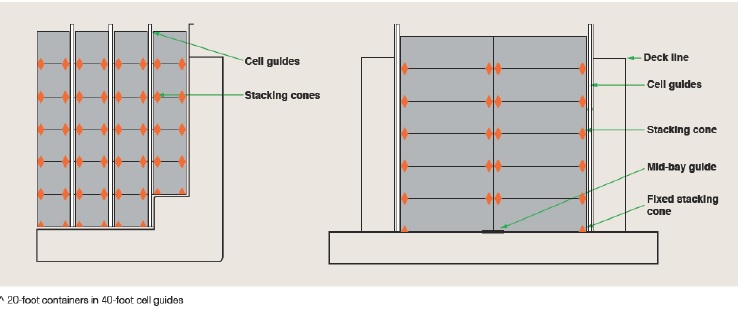
Causes of damage in 2 in 1 Cargo loading in a Containership - What is 2 in 1 loading ?
2 in 1 cargo hold means vessels under deck hold, which could accommodate 1 x 40 feet or
2 x 20 feet in the same row at planners' convenience. It gives a flexible option to
operators for stowage planning and has already become common among many shipping
lines.
Regrettably, some cases often receive container damage report, which is caused by misoperation in 2 in 1 cargo hold. Main reasons are categorized as follows:
1) Either or both of 2 x 20 feet are not properly stowed on-base cones or fitting guide on hold bottom.
2) Stacking cones used for stacking 20 feet containers are not properly set or not removed when not necessary.
3) Base cones used for stowing 2 x 20 feet are not removed before stowing 1 x 40 feet in the same row resulting bent/ damage Corner posts of a container. The corner post connects the upper corner casting of a container to the lower one and forms one of the most stable parts of the container.
You are required to take photos of these situations on board when possible if you find it.

20 feet container stowage in 40 feet cellguides
1) Either or both of 2 x 20 feet are not properly stowed on-base cones or fitting guide on hold bottom.
2) Stacking cones used for stacking 20 feet containers are not properly set or not removed when not necessary.
3) Base cones used for stowing 2 x 20 feet are not removed before stowing 1 x 40 feet in the same row resulting bent/ damage Corner posts of a container. The corner post connects the upper corner casting of a container to the lower one and forms one of the most stable parts of the container.
You are required to take photos of these situations on board when possible if you find it.

20 feet container stowage in 40 feet cellguides

